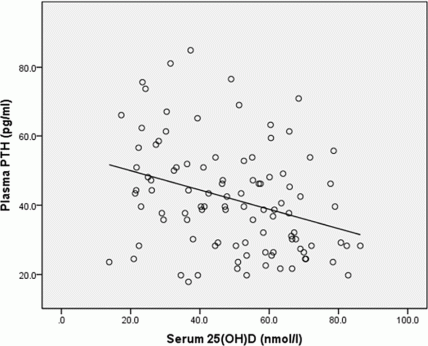ICCBH2017 Poster Presentations (1) (209 abstracts)
Maximal suppression of parathyroid hormone as a determinant of optimal vitamin D status in adolescents
Taryn Smith 1 , Laura Tripkovic 1 , Camilla Damsgaard 2 , Christian Mølgaard 2 , Áine Hennessy 3 , Kirsten Dowling 3 , Kevin Cashman 3 , Mairead Kiely 3 , Susan Lanham-New 1 & Kathryn Hart 1
1University of Surrey, Guildford, UK; 2University of Copenhagen, Copenhagen, Denmark; 3University College Cork, Cork, Ireland.
Suppression of parathyroid hormone (PTH) has been suggested as a potential biochemical outcome measure for determining the optimal serum 25-hydroxyvitamin D (S25(OH)D) concentration for bone health in adults. However, in adolescents increases in PTH may not be driven by the same mechanisms and may not be detrimental to bone health. Adolescent studies have provided a wide range of estimates of the S25(OH)D concentration at which PTH plateaus (40–90 nmol/l), with some reporting no plateau. The aim of this study was to identify the S25(OH)D concentration at which PTH is suppressed (the inflection point) in 14–18 year old white male and female adolescents in the UK. S25(OH)D and plasma PTH were measured in 102 adolescents (mean age 16.2±1.4 years; 41% male) recruited onto a vitamin D dose-response randomised controlled trial. Regression models were used to estimate the S25(OH)D concentration at which PTH plateaued and a linear model was selected based on best fit. Mean S25(OH)D concentration was 49.3±18.0 nmol/l and mean plasma PTH was 41.6±15.6 pg/ml. Plasma PTH was significantly inversely associated with S25(OH)D (r=−0.315, P=0.001) and serum corrected calcium concentrations (r=−0.214, P=0.029), but was not associated with sex, age, Tanner stage or calcium intakes. There was no plateau in plasma PTH, suggesting in this data there was no inflection point (Figure 1). In conclusion, a point of inflection of plasma PTH could not be identified in 14–18 year old adolescents. This may be due to the narrow range of S25(OH)D <100 nmol/l within this sample of adolescents (13.8–86.3 nmol/l). Therefore, based on this data, maximal suppression of PTH is not an appropriate basis for determining optimal vitamin D status in healthy adolescents. This study was funded by the European Community’s Seventh Framework Programme, Grant Agreement 613977 for the ODIN Project.
Disclosure: The authors declared no competing interests.

Figure 1 Linear regression association of serum 25(OH)D with plasma PTH.
 }
}



